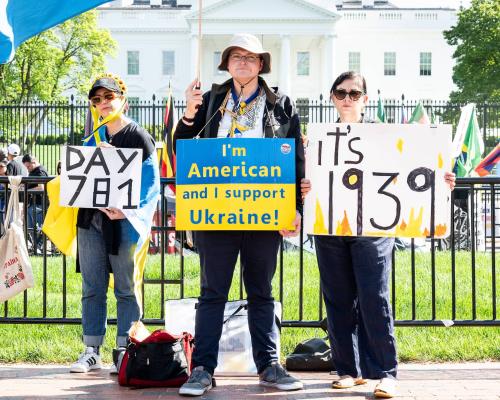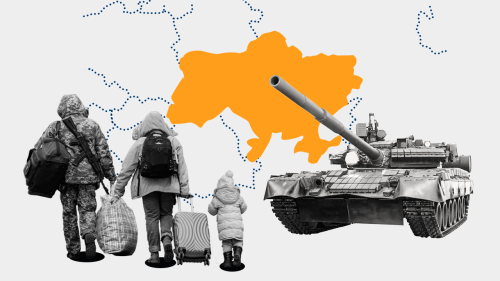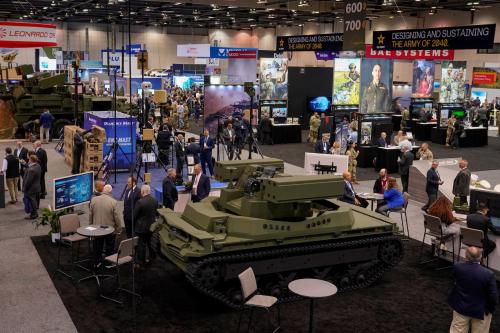This week, key House and Senate committees will finalize their versions of what a new Department of Homeland Security should look like. They face a major task of trying to reconcile President George W. Bush’s original proposal with the many changes that House and Senate committees have recommended in recent days.
The president proposed merging 22 agencies into what would be the third largest Cabinet department. Congressional hearings during past weeks demonstrate increasing doubt about many aspects of this proposal. A top concern is that too many agencies are being shifted around, with too little thought about how this gigantic merger can be managed without losing critical focus on defeating a terrorist threat that remains both real and urgent. Senators and representatives from both parties also worry about what would happen to the many non-homeland security functions—from conducting search-and-rescue missions at sea to assisting victims of natural disasters—that would be folded into the new department under the administration plan.
These concerns were reflected in a series of committee votes stripping the proposed department of a number of key agencies—including the Coast Guard, the Federal Emergency Management Agency, the Secret Service and parts of the Immigration and Naturalization Service.
Congress is on to something important here. Keeping FEMA out makes sense. There is justified fear that an agency that has done yeoman’s work assisting Americans when natural disasters struck will become less effective inside a larger department. Equally important, if a major hurricane, earthquake or other disaster occurs, responsibility for federal assistance will fall on the new department, thus diverting attention from its homeland security mission.
Other proposed changes also make sense. But, rather than adjusting the president’s plan piecemeal, legislators should address its real weakness—the absence of a clear strategic design in the reorganization—and come up with a more promising alternative.
The president proposed his reorganization many weeks before his administration had completed the homeland security strategy he released Tuesday. As a result, the guiding philosophy of the president’s proposal seems to have been bringing into one department as many agencies as possible that have responsibility for some aspect of homeland security—ranging from the Coast Guard and FEMA to the Plum Island Animal Disease Center. But in most cases, the primary mission of these agencies has little to do with securing the nation against terrorist attack.
Just because a variety of agencies perform functions that contribute to homeland security does not mean that they all need to be under a common organizational roof. Military force and diplomacy contribute to our national security, yet no one seriously argues that they should all be conducted by a single agency. And even the president’s proposal leaves out key agencies—CIA, FBI, National Guard, Centers for Disease Control, etc.—that are critical to the homeland security effort.
Rather than merging agencies willy-nilly, we need a focused, strategically directed reorganization. The most immediate task is to strengthen our ability to prevent terrorists from entering the country or bringing in weapons that they could use to do harm. We must also enhance our capacity to track terrorists who may already be here and keep tabs on dangerous materials and means of transportation terrorists might use to attack. And we must better protect the country’s critical infrastructure—the food, water, transportation, energy, financial and information systems on which our well-being depends. Hence a focused reorganization should consolidate agencies, functions and capabilities in three key areas: border and transportation security, critical infrastructure protection, and intelligence and information analysis.
In the first area, the administration has made exactly the right decisions. We need, as Tom Ridge has emphasized, a “common face at the border”—with immigration, customs and agriculture officers all working toward the same ends, with access to the same databases, and wearing the same uniforms. The Coast Guard and the new Transportation Security Administration are also crucial to securing our borders and critical transportation routes. Moving these agencies from their current homes would come at little cost. In no case is border security central to their department’s current mission.
Protecting our critical infrastructure is also vital to any homeland security effort. At present, responsibility for this important task is widely dispersed throughout the federal government. It makes sense to bring what still is a relatively new area of governmental activity into a new department, which can give it the priority it deserves.
Finally, there is currently no single place in the U.S. government that makes a comprehensive assessment of terrorist threats to the United States. Yet, effective prevention efforts require the integration of all relevant data—from the intelligence community, law enforcement and border and transportation agencies—dealing with terrorism at home. Any Department of Homeland Security should therefore contain a new, adequately staffed unit responsible for examining all intelligence and law enforcement information (including all “raw” data) pertaining to terrorist threats to the country.
A reorganization along these lines would provide a more manageable alternative, involving just half the 22 agencies in the original White House plan. It would not be small. The border and transportation agencies account for the bulk of the personnel, both in the president’s plan and in our proposal. But its mission would be far more focused. And the chances of successfully merging the agencies while concentrating on meeting the threat out there right now will be far greater as a result.



Commentary
Op-edGreater Focus Needed in Homeland Agency
July 18, 2002